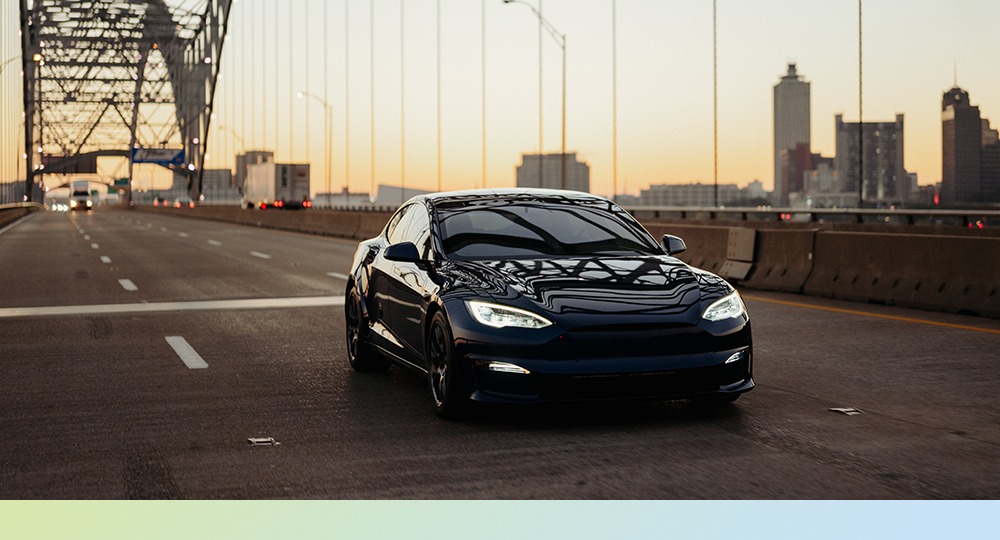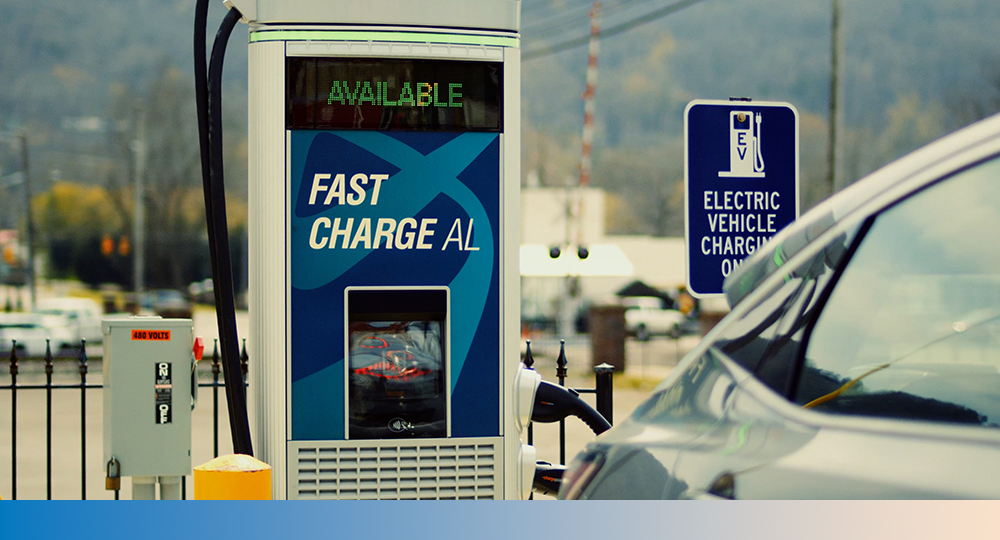Do you know the answers to these 10 common questions about electric vehicles?

Answers to common (and sometimes funny) questions about electric vehicles
1. Can an EV go through a car wash?
Yes, absolutely! Stow your sponges and squeegees: You can take your electric car through any automated car wash. Automatic car washing systems may include soft-touch, no-touch, high-pressure and tunnel washes.
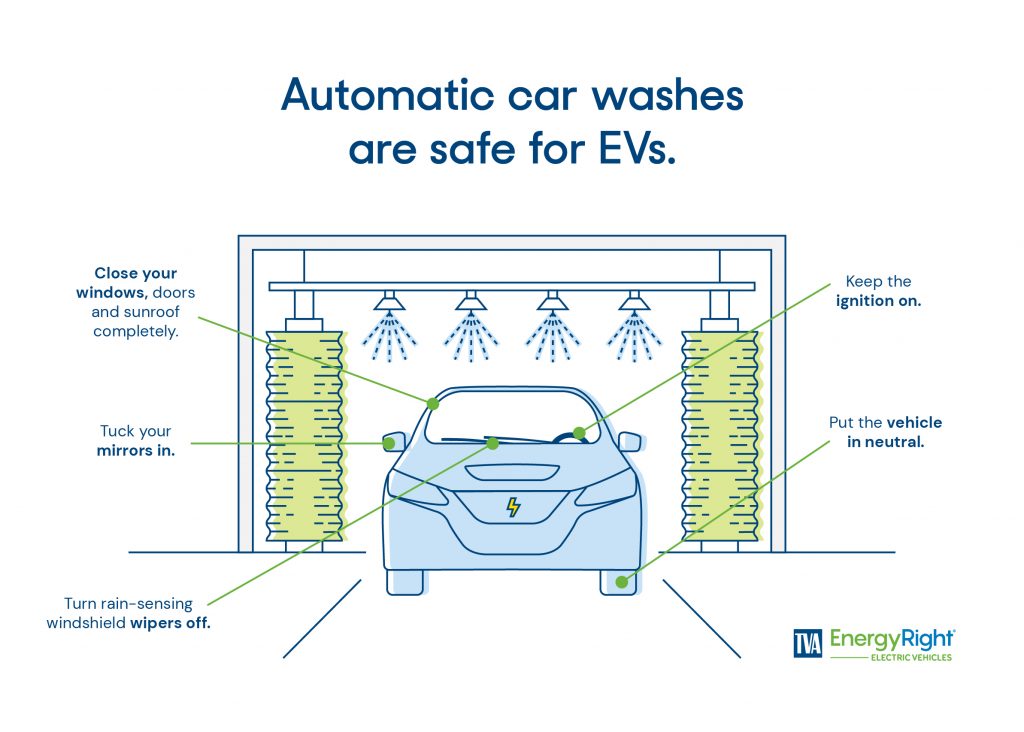
Automatic car washes are as safe for EVs as they are for cars powered by gas (aka internal combustion engines, or ICE). These washing systems will not damage batteries, electrical systems or motors. (You can even charge your EV in the rain, but that’s a topic for another day.)
Just as you would when taking your ICE ride through an automated tunnel car wash, it’s a good idea to follow this checklist when you line up for a sudsing:
Automated car wash tips:
- Tuck your mirrors in.
- Close your windows, doors and sunroof completely.
- Turn rain-sensing windshield wipers off.
- Keep the ignition on.
- Put the vehicle in neutral.
One more thing, because sometimes we can’t help ourselves! About those sponges and squeegees: You may want to hang on to them. Although you can safely run your EV through a car wash, these convenient cleansers can scratch or damage the paint finish of any car, ICE or electric. Plus, many car washes use environmentally harmful chemicals that can degrade paint and pollute rivers and streams. From an environmental and budgeting standpoint, your best bet is to hand-wash your car with biodegradable soap.
2. How many makes and models of EVs are available in the U.S.?
U.S. electric vehicle (EV) sales hit a record high in Q3 (July, August and September) 2024, with 346,309 units sold—a 5% increase from Q2 2024 (April, May and June) and an 11% jump year-over-year, according to Kelley Blue Book. EV market share climbed to 8.9%, up from 7.8% in Q3 2024, reflecting steady growth despite a slower pace. 2025 could potentially be another solid year for EVs with new models expected from manufacturers such as Acura, Audi, Cadillac, Ferrari and more!
There are nearly 100 battery-only EVs (BEVs) and plug-in hybrid EVs (PHEVs) available in the U.S. And here’s a look at all of them.*
*Available in the U.S. as of November 16, 2023.
SOURCE: EVAdoption.com
3. How does extreme cold or hot weather affect EVs?
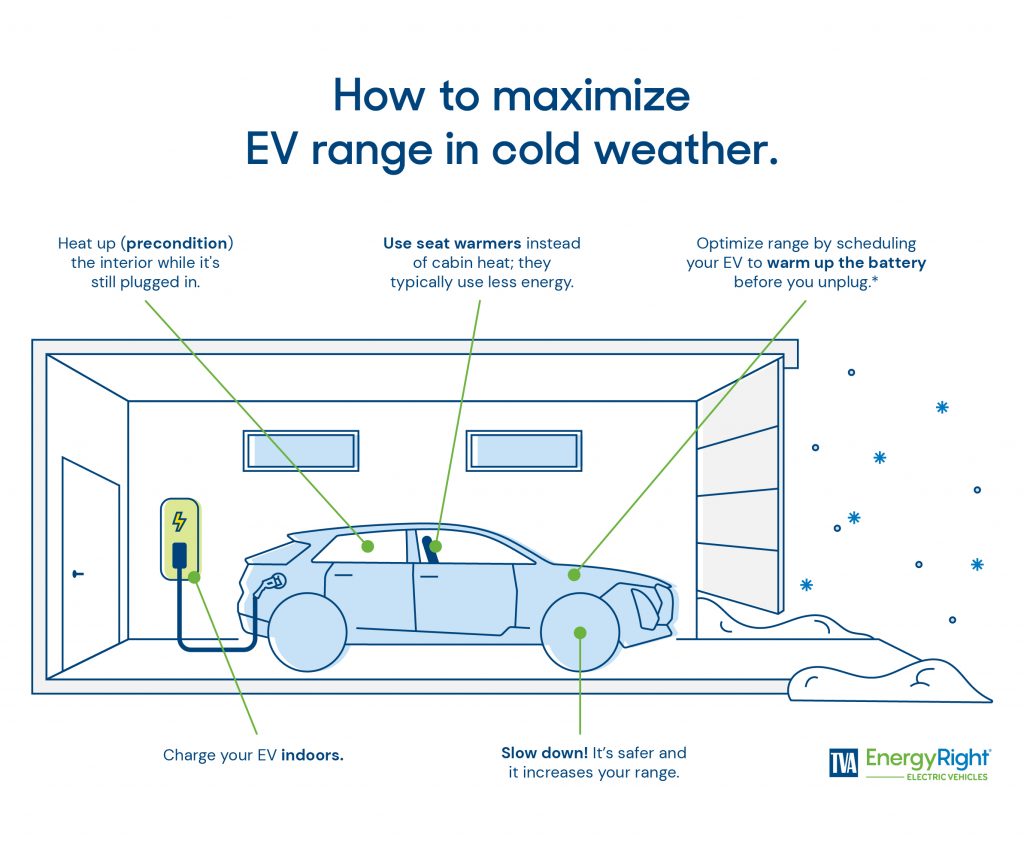
After the record-snapping cold spell of 2022, the cold weather question is fresh on the mind. Here’s the thing: All cars, gas and electric, use more energy in cold weather. That means lower gas mileage for ICE drivers and a shorter range (how far an EV can go on a single charge) for EV drivers.
According to Consumer Reports, extreme temperatures can reduce an unplugged EV’s range by about 20%, and recharging takes longer. Here are a few tips for getting the most out of your EV range during extreme cold (20° F and below) temperatures:
How to maximize EV range in cold weather:
- Charge your EV indoors.
- Precondition your cabin while the EV is still plugged in. Many EVs allow you to schedule preconditioning – EV lingo for heating or cooling the cabin – so you can climb into a toasty-warm car on a cold day without using energy from the battery.
- Allow your battery to warm up to optimal operating temperature before leaving your garage.*
- Use seat warmers instead of cabin heat; they typically use less energy, and they offer instant gratification.
- Slow down! Not only is it safer, but it increases your range. The faster you go, the more energy your EV uses, so set that cruise control and let it ride!
SOURCE: energy.gov
*Most EVs have a preconditioning function that you can schedule to automatically warm up the battery and cabin from the power grid instead of your vehicle’s battery. Preconditioning time may vary depending on the temperature and type of EV you drive.
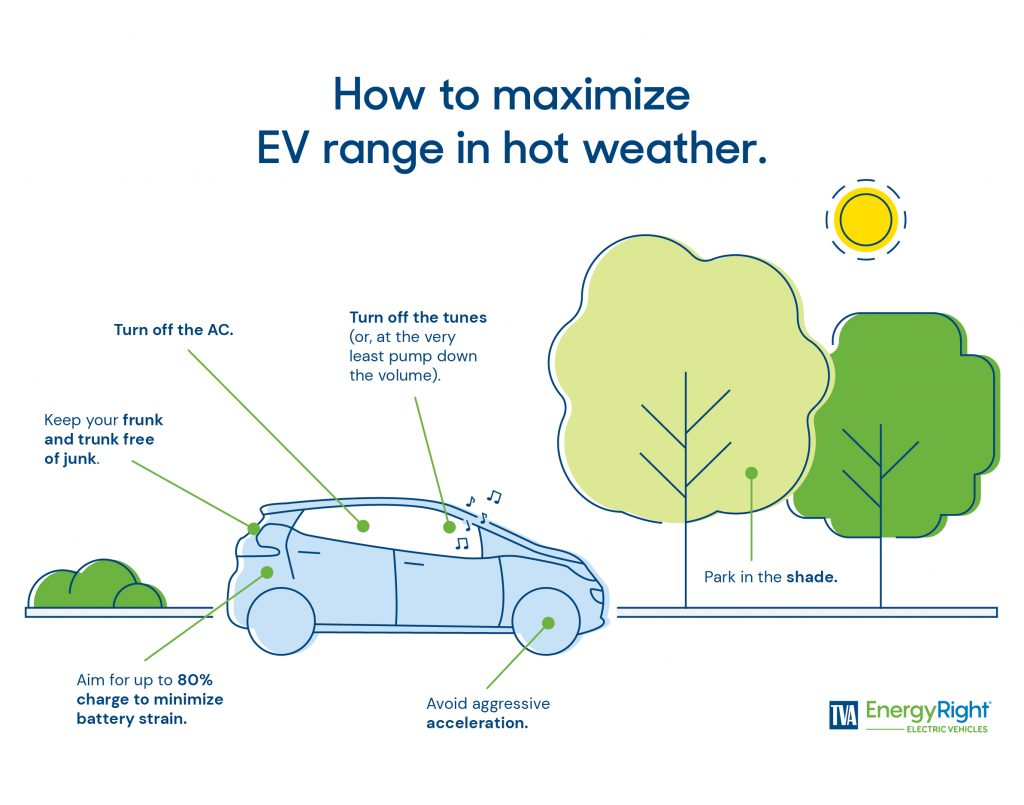
Extreme heat (95° F and above) can cause a temporary drop in an EV’s range. According to PCMag, most cars are built with heating and cooling systems to regulate their temperature to prevent long-term detrimental effects on your battery.
How to maximize EV range in hot weather:
- Park in the shade.
- Precondition your EV interior.*
- Avoid aggressive acceleration.
- Keep your trunk and frunk free of junk (lighten your payload).
- Aim for up to 80% charge to minimize battery strain.
- Charge during off-peak hours.
- Keep your tires properly inflated.
SOURCE: KBB.com
*Many electric cars have a “precondition” feature that lets you remotely cool down the interior while the EV remains plugged in.
Preconditioning can help optimize your EV’s performance in hot weather by reducing the strain on the air conditioning system once you start driving. Since the cabin is already cool, the battery isn’t overworked, dropping the temperature to a comfortable level.
4. What are the environmental advantages of EVs?
Generally speaking, over the lifetime of the car, electric vehicles are better for the environment than their gas-powered counterparts, even when you account for battery manufacturing.
Here are a few big-picture environmental benefits of driving electric:
- Have zero tailpipe emissions.
- EVs contribute fewer overall emissions than ICE vehicles.
- EVs are 2-3x more efficient than gas-powered cars.
- Lithium-ion manufacturing is more climate friendly than the alternative.
- EVs with bidirectional charging* capabilities can help stabilize the energy grid.
SOURCES: EPA.gov, fueleconomy.gov, climate.mit.edu, car.com
*Bidirectional charging allows electricity to flow from an EV back into the grid or into your home.
5. Can I tow with an EV?
Yes. Electric vehicles like the Audi e-tron, Ford 150 Lightning, GMC Hummer EV, Hyundai Ioniq and Kona, and Rivian trucks – to name just a few – are all rated for towing.
However, towing heavy loads can cut your range in half, so plan your trip accordingly!
SOURCES: InsideEVs, Forbes.com, cars.com
6. Do electric vehicles catch on fire?
Fire risks exist for both electric and ICE vehicles. Let’s take a look at the numbers and the facts and check out the sources below:
- Millions of gas, hybrid and electric vehicles are recalled each year for fire risks.
- Gas-powered vehicles have the most manufacturer recalls for fire risk defects.
- Electric car fires can be harder to put out than gas car fires. Firefighter training helps first responders respond safely.
- Gas cars are three and a half times more likely to catch fire than EVs.
What to do if your car catches fire:
- Pull over as soon as safely possible and shut off the car.
- Get everyone out of the car immediately.
- Call 911.
- Stay at least 100 feet away from the vehicle.
- Stay upwind from the fire, if possible.
- DO NOT open the hood or trunk if you suspect a fire in either location.
- DO NOT attempt to put the fire out yourself.
SOURCES: AutoinsuranceEZ.com, consumerreports.org, NFPA.org, edmunds.com
7. Are all electric cars automatic?
Yes (for now), and most electric cars have only one gear! However, some models – like the Porsche Taycan and Audi e-tron – are bucking the one-speed trend by offering a multi-speed gearbox. (Toyota is also developing a manual transmission experience for EV drivers.)
In these models, first gear helps cars launch quicker. After launch, both cars automatically shift into high gear for better high-speed driving performance and a higher top speed.
8. What are some of the disadvantages of electric cars?
There are plenty of benefits to EVs: They are fun to drive, environmentally friendly, cost less to fuel, have lower maintenance costs, require fewer trips to the mechanic, offer at-home charging/refueling convenience and provide great performance. Although there are plenty of entries in the pro-EV column, there are valid concerns worth addressing.
Let’s dive right in and speak to the biggest concern for many drivers: finding charging stations. Even though charging an EV at home more than covers a week of typical commuting, long-distance road trips will require some planning.
Fortunately, the charging infrastructure – or electric fueling infrastructure – is growing. More and more communities, hotels and parks are embracing DC fast chargers, solar chargers and Level 2 charging stations for public use.
Plus, Tesla is opening up its supercharger network to vehicles made by other manufacturers, a move that will dramatically increase fast charging options for some EV owners. Not only that, but Tesla is even inviting other companies to use its charging technology, which the company renamed in late 2022. It’s now known as the North American Charging Standard (NACS).
Both Ford and General Motors have announced that they will offer built-in NACS ports in the future. In the meantime, both companies will begin providing adapters to their customers soon. In early 2024, Stellantis also announced that it would adopt the Tesla-invented and SAE standardized plug. In the meantime, some manufacturers, like Ford and Rivian, are giving their EV customers adapters.
Until very recently, EV sticker prices were generally higher than their gas-powered counterparts; however, federal incentives and rapidly falling battery and raw material costs have many experts predicting that EVs could match gasoline cars on price soon. While EVs may still cost more upfront to purchase, recurring charges for fuel and maintenance are generally cheaper, so the total lifetime cost may be lower than that of a gas vehicle. According to data from the U.S. Department of Energy, buyers who are switching to an electric vehicle could also save up to $14,500 over a 15-year lifespan compared to the average gasoline-powered vehicle.
According to the U.S.Internal Revenue Service, in the first quarter of 2024, buyers of qualified clean vehicles have been able to collectively save over $600 million at the time-of-sale as a result of tax credits, an average of $6,900 per sale.
9. Do EVs need oil changes?
Nope! EVs are powered by electric motors rather than internal combustion engines, which require regular oil changes to lubricate all the moving parts.
Although you can bid farewell to motor oil and other expensive engine- and transmission-related routine maintenance, EVs still need some routine maintenance and fluids such as coolant, brake fluid, and wiper fluid.
10. Are EVs safe?
As more and more EVs hit the streets, there’s a growing body of evidence indicating they’re at least as safe as gas-powered cars.
The Insurance Institute for Highway Safety (IIHS) – an independent nonprofit scientific and educational organization – recently handed its TOP SAFETY PICK+ designation to the Genesis Electrified GV70, Hyundai Ioniq 6 and Lexus RZ.
Looking for more good EV safety news? The IIHS-affiliated Highway Loss Data Institute analyzed crash data on electric and conventional versions of nine models from 2011 to 2019 and found that injury claims related to the drivers and passengers of EVs were more than 40% lower than injury claims for identical conventional models because the drivers and passengers in heavier vehicles, like EVs, are exposed to lower forces in multi-vehicle crashes.
SOURCES: IIHS, Consumer Reports, Motor Trend
This site’s content (including, without limitation, references and links to third-party information) is based on information provided at the time of publishing, and TVA makes no warranty therein.

